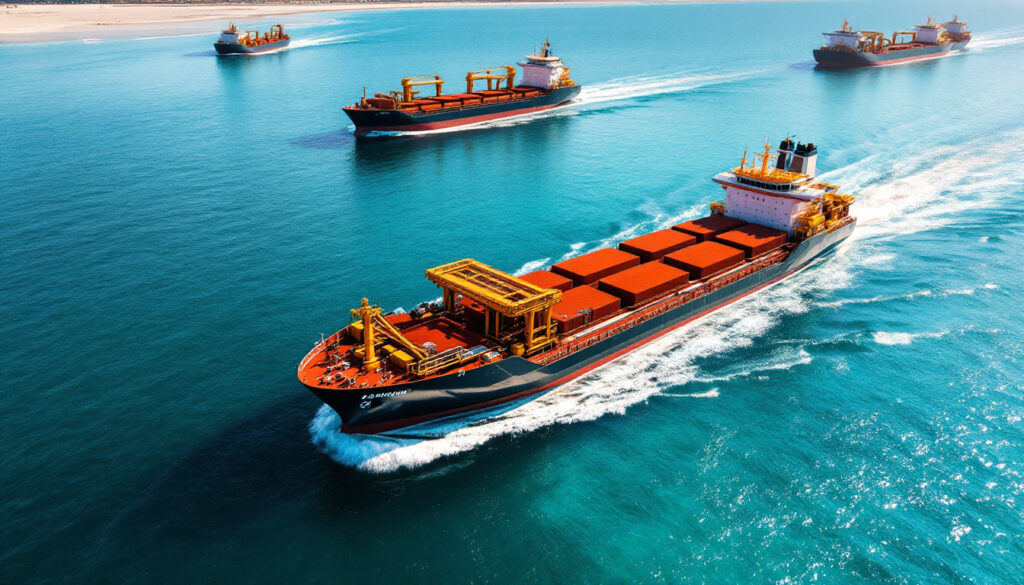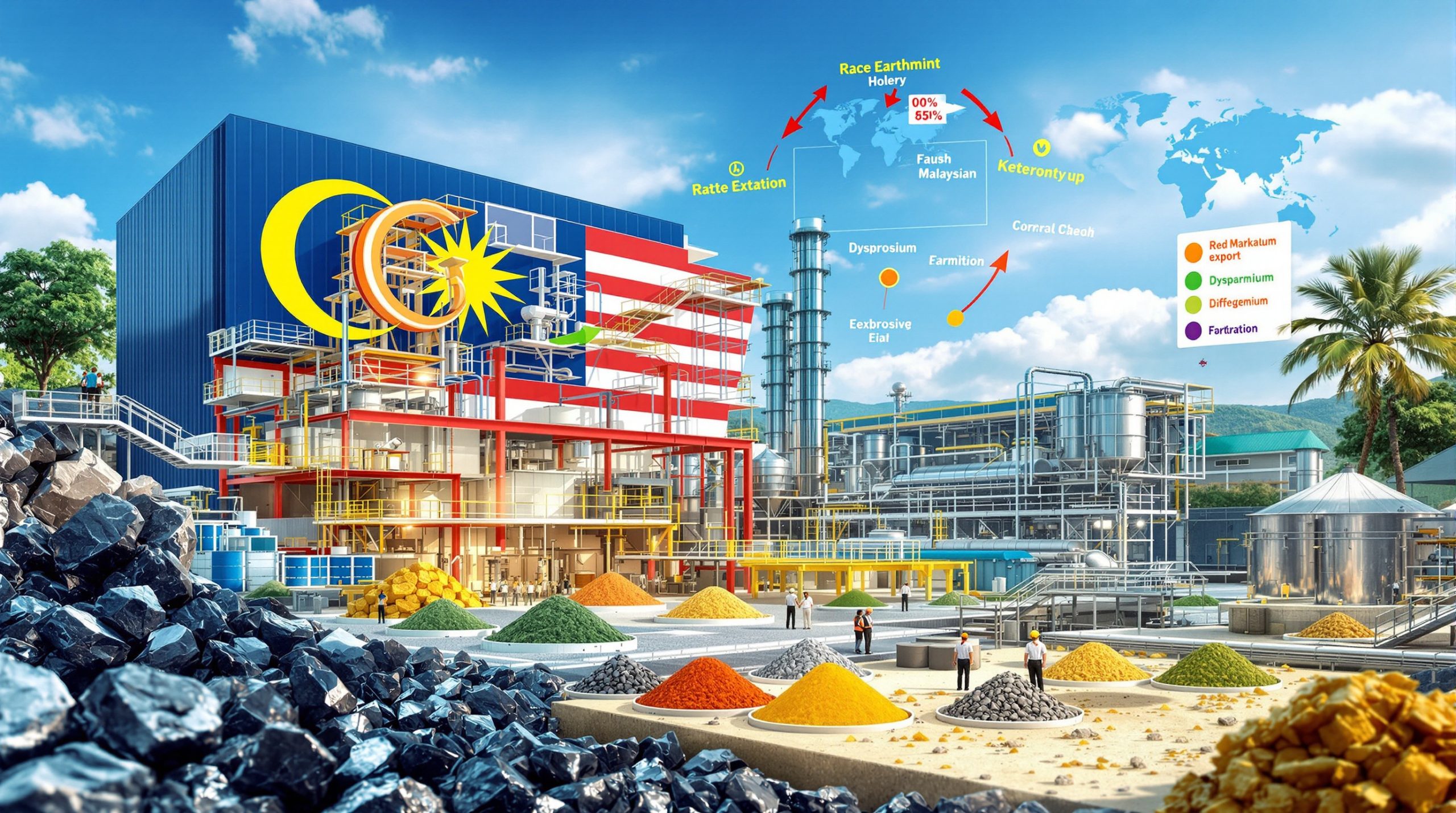Fourth Onslow Iron Transhipper Makes Its Debut: Expanding MinRes' Iron Ore Capacity
The arrival of MinRes Rosily, the fourth transhipper in Mineral Resources' (MinRes) innovative Onslow Iron operation, marks a significant milestone in Western Australia's iron ore industry. This sophisticated vessel joins the existing fleet of three transhippers that have been instrumental in unlocking previously stranded iron ore deposits in the West Pilbara region. With the addition of MinRes Rosily, the project's transhipping capacity has increased to approximately 28 million tonnes per annum (Mtpa), bringing MinRes closer to its ambitious target of 35 Mtpa. Furthermore, this development aligns with broader industry trends outlined in Canberra's Iron Ore Price Forecast Implications for Australia's mining sector.
What is the Onslow Iron transhipping operation?
The Onslow Iron transhipping operation represents a groundbreaking logistics solution developed by Mineral Resources to access iron ore deposits that traditional export infrastructure couldn't effectively service. This innovative system operates from the Port of Ashburton, where specialized vessels shuttle iron ore to larger ocean-going vessels (OGVs) anchored 40km offshore in deeper waters.
This approach has effectively bypassed the need for expensive deepwater port infrastructure while creating a viable export pathway for previously inaccessible iron ore reserves. The transhipping model has transformed the economics of West Pilbara's iron ore deposits, which had remained undeveloped due to prohibitive infrastructure costs associated with conventional export methods.
According to industry analysts, approximately 15-20% of Western Australia's iron ore reserves have historically been classified as "stranded" due to their distance from viable export infrastructure. The Onslow Iron operation demonstrates how technological innovation can recategorize these assets from stranded to productive, ultimately reshaping global supply chains throughout the iron ore industry.
How do the Onslow Iron transhippers work?
Each MinRes transhipper features precise dimensions engineered for optimal performance: 123 meters in length, 36 meters in width, and a remarkably shallow seven-meter draft. This shallow-draft design is a critical environmental consideration, minimizing seabed disturbance while maintaining operational capabilities in shallower port environments.
The vessels employ sophisticated self-loading systems capable of holding 20,000 tonnes of iron ore per journey. Their impressive loading rate of 8,000 tonnes per hour and unloading rate of 6,000 tonnes per hour ensure efficient cargo transfer, minimizing turnaround times between the port and offshore OGVs.
The transhippers utilize advanced automated cargo distribution systems that precisely balance the load throughout the vessel's holds. This automation not only improves safety by reducing manual handling but also optimizes vessel stability during transit, particularly important given the sometimes challenging sea conditions of Western Australia's northwest coast.
Compared to traditional Panamax vessels that typically require a minimum draft of 12-14 meters, MinRes transhippers can operate in significantly shallower waters, expanding the range of viable port locations. This engineering adaptation has proven crucial to unlocking the Onslow Iron project's potential.
What is the significance of the fourth transhipper?
The commissioning of MinRes Rosily represents a critical inflection point in the Onslow Iron project's production ramp-up strategy. With four vessels now operational, the system's capacity has increased to 28 Mtpa—a significant step toward the project's ultimate target of 35 Mtpa.
"Each additional transhipper plays a critical role in our project's ramp-up strategy," explained Jeff Weber, MinRes Executive General Manager Marine. "The sequential deployment of these vessels allows us to systematically increase capacity while optimizing operational integration."
The fourth vessel joins the existing fleet of MinRes Airlie, MinRes Coolibah, and MinRes Montebello, all of which commenced operations earlier in 2024. This methodical fleet expansion reflects a carefully calibrated approach to scaling operations, with each vessel adding approximately 7 Mtpa of capacity to the system.
The deployment timeline illuminates MinRes' strategic approach: three vessels were commissioned in early 2024, the fourth in March 2025, with the fifth and final vessel expected to complete the initial fleet later in 2025. This phased implementation has allowed for crew training and operational refinements at each stage of expansion, representing one of many digital innovations in mining operations transforming the industry.
What makes MinRes' transhipping operation unique?
According to Weber, once the fifth vessel joins the fleet, the Onslow Iron transhipping operation will become "the largest and most sophisticated transhipping operation in Australia." This distinction stems not merely from its scale but from several innovative operational aspects.
The operation's 40km offshore transfer distance exceeds typical transhipping operations, which generally operate within 15-25km of shore. This extended range has required advanced navigation systems and precise coordination between vessels to maintain efficiency despite the greater distances involved.
A distinguishing feature of the Onslow Iron operation is its comprehensive cyclone avoidance protocols. Given the region's susceptibility to tropical cyclones during the wet season (November to April), MinRes has developed sophisticated weather monitoring systems and emergency response procedures utilizing Crew Transfer Vessels (CTVs) to relocate personnel and secure equipment during severe weather events.
The transhipping model has effectively created a "virtual port" that functions with the efficiency of a traditional deepwater facility but without the environmental impact and capital expenditure associated with major port construction. Environmental assessments indicate that the transhipping approach has reduced the project's seabed disturbance footprint by approximately 85% compared to traditional port development options, supporting broader decarbonisation in mining initiatives across the industry.
What support vessels complement the transhipping operation?
The Onslow Iron transhipping operation is supported by two specialized Crew Transfer Vessels (CTVs): MinRes Element and MinRes Incentive. These vessels serve as the operational backbone of the transhipping ecosystem, fulfilling multiple critical functions beyond simple personnel transport.
The CTVs are designed for versatility, capable of:
• Transferring marine crew and specialized technical personnel between shore facilities, transhippers, and ocean-going vessels
• Transporting essential supplies, including food, medical provisions, and technical equipment
• Providing stable marine platforms for maintenance operations and port works
• Supporting emergency response scenarios, including evacuations during adverse weather
Each CTV can transport up to 24 personnel at speeds of 25 knots, ensuring rapid deployment across the operation's extensive marine footprint. Their aluminum catamaran design provides stability in varying sea states while maximizing fuel efficiency.
During the 2024 cyclone season, these vessels demonstrated their critical value when Tropical Cyclone Lincoln approached the region. The CTVs facilitated the safe relocation of non-essential personnel and secured mobile equipment, significantly reducing operational recovery time following the weather event, as reported by The DCN.
What is the future outlook for Onslow Iron's transhipping capacity?
MinRes plans to complete its initial transhipping fleet with the addition of a fifth vessel in the second quarter of 2025. This final addition will establish Onslow Iron as Australia's largest transhipping operation and enable the project to reach its full production target of 35 million tonnes per year.
The company's substantial investment in this sophisticated fleet—estimated at over AUD $500 million—demonstrates its long-term commitment to innovative logistics solutions for Western Australia's iron ore industry. This investment is particularly significant given the challenging market conditions that have faced the iron ore sector in recent years.
Looking beyond the initial five-vessel fleet, MinRes has indicated plans for potential technology upgrades to existing vessels, which could further increase capacity without additional hull numbers. These upgrades may include enhanced automation systems, improved loading mechanisms, and optimized scheduling algorithms to reduce turnaround times.
Industry analysts project that the full implementation of the 35 Mtpa capacity will create approximately 400 direct maritime jobs and 1,200 indirect support positions, representing a significant employment boost for the Pilbara region. Additionally, the project's innovative approach has positioned Western Australia as a global leader in alternative export infrastructure for bulk commodities, directly impacting mining and finance industry predictions for 2025.
FAQ: Onslow Iron Transhipping Operation
How many transhippers are currently operating at Onslow Iron?
Four transhippers are currently in operation: MinRes Airlie, MinRes Coolibah, MinRes Montebello, and the newly arrived MinRes Rosily.
What is the current transhipping capacity of the Onslow Iron operation?
With the addition of the fourth transhipper, the operation's capacity has increased to approximately 28 million tonnes per annum (Mtpa).
What is the target production capacity for Onslow Iron?
Mineral Resources is aiming for a production capacity of 35 million tonnes per year (Mtpa) for the Onslow Iron project, which will be achieved with the addition of the fifth transhipper.
Why does Onslow Iron use transhippers instead of direct port loading?
Transhippers allow access to iron ore deposits that would otherwise be stranded due to port limitations. This innovative approach enables vessels to load from smaller ports with shallower drafts and transfer cargo to larger ocean-going vessels offshore, eliminating the need for expensive deepwater port infrastructure.
How do the transhippers contribute to environmental sustainability?
The transhippers' shallow seven-meter draft minimizes seabed disturbance, and the transhipping operation reduces the environmental footprint by approximately 85% compared to traditional port development. Additionally, the innovative logistics solution eliminates the need for extensive dredging operations typically associated with deepwater port construction.
Looking to Invest in Australia's Next Major Mineral Discovery?
Stay ahead of the market with Discovery Alert's proprietary Discovery IQ model, which delivers instant notifications on significant ASX mineral discoveries like those discussed in the MinRes iron ore expansion. Understand why major discoveries can lead to substantial returns by exploring our dedicated discoveries page and begin your 30-day free trial today.




